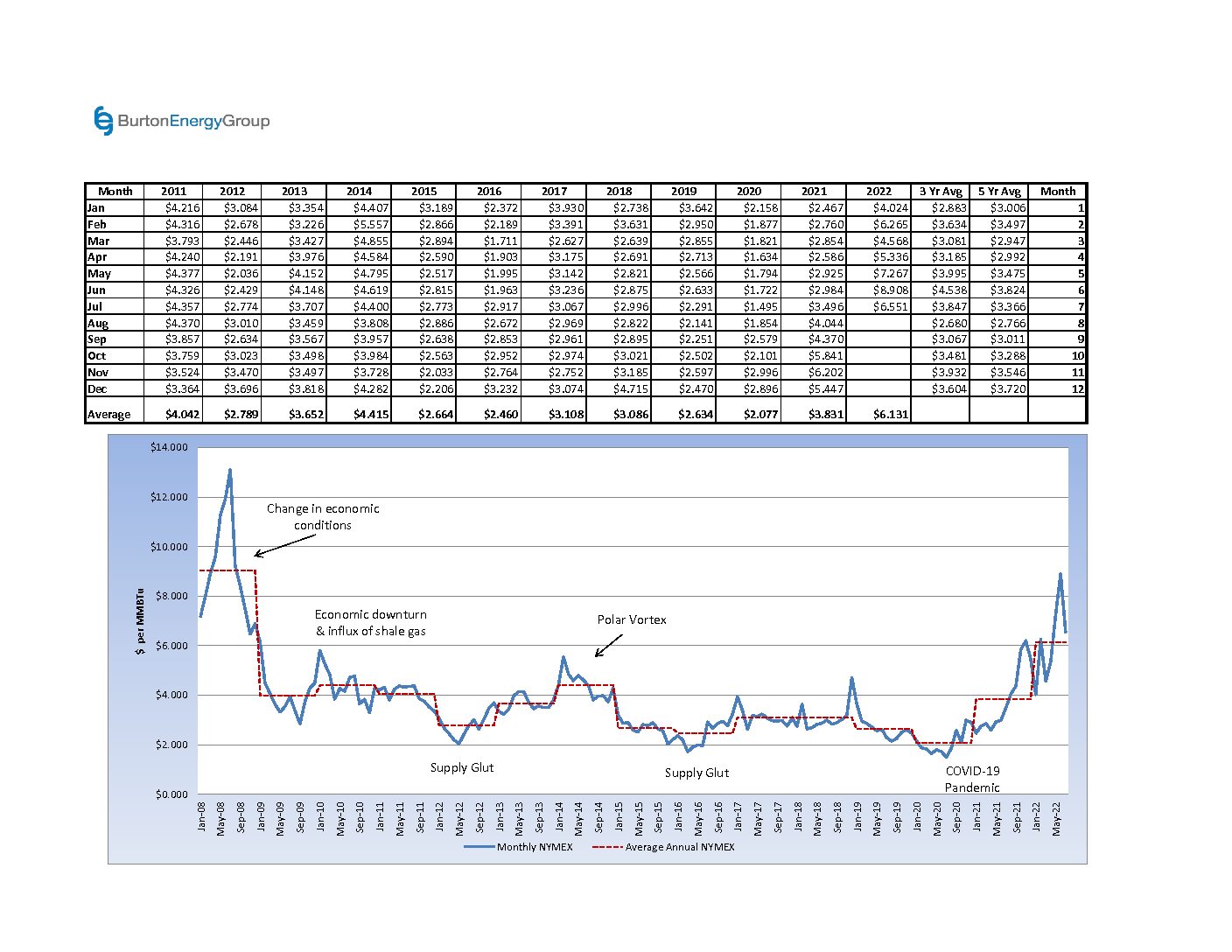After surging above $9 per MMBtu in May, natural gas prices have retreated significantly and the July contract settled at $6.551 per MMBtu, 26% below the June contract. The fire at the Freeport LNG facility has removed nearly 17% of liquified natural gas (LNG) from being exported and the U.S. Pipeline and Hazardous Materials Safety Administration found conditions posing a public safety risk, which is extending the timeline of the facility to be offline. Analysts said this will likely delay the restart of the plant for 90 to 120 days, but could delay a full restart even further, which placed bearish pressure on pricing. Additionally, natural gas storage levels have been increasing at a greater pace than analysts were projecting for this summer, which triggered another 33% decline in natural gas prices at the end of June. Last week; however, the storage report was much lower than expectations and natural gas prices rebounded above $6 per MMBtu, after previously declining to $5.424 per MMBtu. Despite this significant decline, natural gas prices are still 40% above last year. On Thursday, the U.S. Energy Information Administration (EIA) reported a build of 60 Bcf, moving storage levels to 10% below last year’s level, and 12% below the five-year average, for the same reporting week. While storage levels are still below average, the market is finding these levels to be more manageable. The significant increase in electric and natural gas prices this year are starting to impact the industrial operations here in the U.S. At the end of June, Century Aluminum Co., the second largest aluminum mill in America, laid off 600 workers, because of their rising electricity costs. At least two steel mills have begun suspending some operations to cut energy costs and Alcoa Corp. has said it’s closing a third of its production at their mill in Indiana, because of “operational challenges.” U.S. electric prices are expected to reach their highest levels ever this summer for industrial customers. Since U.S. plants and factories depend heavily on electricity and natural gas, these rising costs could threaten the boom that U.S. manufacturing has experienced in recent years, bringing more production back home.
